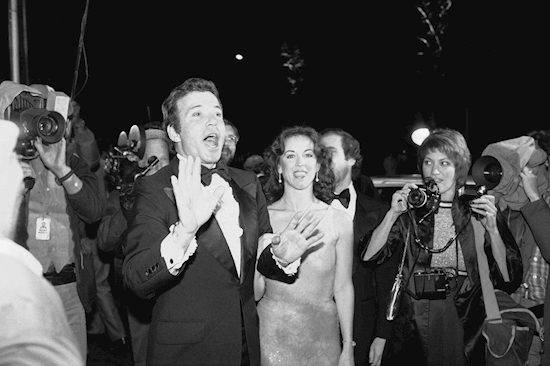The first ‘Star Trek’ film took off from an unlikely launchpad: Washington
There is an unusual and I believe newsworthy anniversary coming up. Dec. 6 will be the 40th anniversary of the premiere of “Star Trek: The Motion Picture.” What’s unusual is that the premiere was held at a neighborhood theater instead of a big, glamorous one — specifically the K-B MacArthur Theater in the Palisades section of Washington. They held the premiere in the District because they wanted to have the after-viewing party at the National Air and Space Museum. It’s a big deal, I believe.
— Bernie Horn, Washington
Not long ago, a book of matches popped up for sale on eBay. The matchbook bore the logo of the National Space Club and commemorated the world premiere in Washington of “Star Trek: The Motion Picture.”
AD
The book was from the collection of Susan Sackett.
“People smoked in those days,” said Sackett, a writer who for 17 years was the executive assistant to Gene Roddenberry, creator of “Star Trek.” Now living in Arizona where she performs civil wedding ceremonies, Sackett has been parting with her collection of Trekiana. She has vivid memories of the premiere of the first “Star Trek” movie.
AD
The cast was ensconced at the Four Seasons in Georgetown. There was a cocktail party and then they were conveyed by limousine to the K-B MacArthur for the screening, then to the National Air and Space Museum, where, “in the shadow of Lindbergh’s Spirit of St. Louis we had another party,” she said.
AD
The after-screening reception and its $100 tickets benefited the National Space Club, founded in 1957 to promote U.S. achievements in space.
“It was like Hollywood in Washington,” Sackett said of the star-studded premiere. “It was like being in a Cinderella movie.”
Alas, in the story of Cinderella the clock strikes midnight and the chariot becomes a pumpkin. On Dec. 6, 1979, the pumpkin was the movie itself. It had undergone a rough gestation.
“Star Trek” and its many spinoffs seem successful now, but the original series — debuting in 1966 and starring William Shatner, Leonard Nimoy and DeForest Kelley — received middling ratings, leading NBC to cancel it in 1969.
AD
AD
The idea for a new TV show called “Star Trek: Phase II” arose in 1977, but the box office success of “Star Wars” and “Close Encounters of the Third Kind” persuaded Paramount to make a movie instead.
Edward Gross and Mark A. Altman recount the difficulties that bedeviled the motion picture in “The Fifty-Year Mission: The First 25 Years,” an oral history of “Star Trek.” Among them was the screenplay, credited to Harold Livingston, from a story by Alan Dean Foster. The dialogue was being tinkered with as shooting progressed.
Veteran director Robert Wise (he’d made “The Day the Earth Stood Still”) had to fire the special effects company after six months of expensive work had not produced one usable frame of film. Douglas Trumbull, who had done the effects for “Close Encounters,” was brought in to do the work.
AD
AD
Breathing down everyone’s necks was a hard deadline. The film had been “blind-booked” into theaters. That meant if Paramount failed to provide the movie in time to begin its run on Dec. 7, it would owe exhibitors cash payments totaling close to $35 million.
“They had people sleeping in sleeping bags on the floor of the studio” so the work could be completed in time, Sackett said.
As Washington readied for the premiere, the Hollywood PR machine was in full swing. There was “Star Trek Night” at Montgomery Mall, with the Hecht’s department store hosting an “alien fashion show” featuring costumes and masks from the film. Uhura actress Nichelle Nichols was available “for autographed photos and posters, and intergalactic chitchat.”
AD
At Northern Virginia Community College, Friday was “Star Trek Day,” with lectures from the movie’s technical adviser and a presentation of “Star Trek” bloopers.
AD
On the evening of the premiere, several hundred fans lined the red carpet outside the K-B MacArthur, eager for a glimpse of Kirk and Spock.
For many of the actors, it was the first time they would see the completed movie, the print of which was reportedly still wet when it arrived at the theater.
The lights went down, the projector whirred and then . . . well, allow Walter Koenig, the actor who played Chekov, to describe his reaction, as quoted in “The Fifty-Year Mission”: “I got very excited, but shortly thereafter I began to become aware of time, that time was passing. That I wasn’t involved in the picture. I was sitting in the audience and my heart sank.”
AD
A movie that had cost $46 million — at the time the most spent on a film — was boring. The plot — a mysterious cloud is traveling through space, consuming everything in its path — had a denouement recycled from the TV show. The special effects were impressive, but there were just too many of them.
AD
Still, “Star Trek: The Motion Picture” made money. And it proved something no one had been sure of: A concept born on a TV screen could survive being transported to a movie screen.
Sackett was an extra in the film — “I’m the third white jumpsuit from the left on the balcony in what they called the rec deck — recreational deck — scene,” she said — though a close-up of her was left on the cutting-room floor.
The K-B MacArthur is now a CVS. The “Star Trek” franchise has gone on to live long and prosper.
Set your phasers on “donate” and give to one of the charities of The Washington Post Helping Hand. For information, visit posthelpinghand.com.
Twitter: @johnkelly
For previous columns, visit washingtonpost.com/john-kelly.
AD
AD
Source: www.washingtonpost.com

